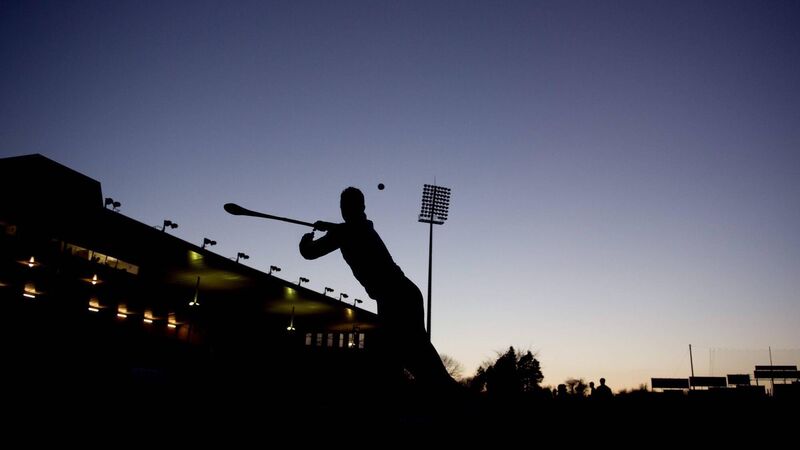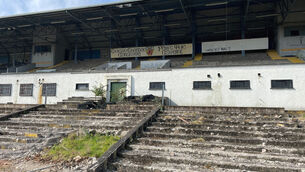Paul Rouse: GAA must now be prepared for Championship wipeout

WAITING FOR THE LIGHT: It is striking that such a sizeable minority of many inter-county players voted yesterday to call off the championship, says Paul Rouse. It is in this context that Government and sports administrators must make some very tough decisions. Picture: Brendan Moran / Sportsfile
There is no denying the tension that is building around the playing of the All-Ireland championships. The desire to see a championship played is widespread — but so too is the view that its playing is not a good idea.
The sense that social gatherings after county finals have contributed to the upsurge in the number of Covid-19 cases has increased pressure on the GAA.
And if the Government follows the advice of Nphet and moves to Level 5, then it is impossible to see how the championship can be played. Talk of potential exceptions for inter-county matches look wildly off the mark.
Indeed, even if the Government moves to level four, it will remain very difficult for inter-county matches to be played. The relentless rise of positive cases north and south of the border shows no sign of abating and, in that environment, the GAA may decide that the wisest course of action is to postpone its senior inter-county matches.
Ultimately, here is a tension between the GAA as top-level sport and its sense of itself as a community-based, amateur organisation. The GAA’s top players are not separated from a public, in gated communities living in some sort of bubble. They live in family homes and student dorms, and city apartments.
And, in a time of Covid, it means that they live in and around the potential of contacting an illness which they can bring to a squad and then bring home.
Depending on the circumstances of your life, that is a potentially lethal proposition.
It is also a proposition that sits alongside a passion to play county football and hurling.
Both of these aspects were set out with clarity and decency this week by the Westmeath forward, John Heslin, who spoke of his “health and welfare” concerns related to playing the championship, and Armagh forward, Stefan Campbell, who spoke of his desires to play and the sacrifices he has made to play football as autumn turns to winter.
They are both right in what they say — and that makes decision-making spectacularly difficult.
The Government clearly wished for many months for the games to go ahead. Through its summer grants — and again in this week’s budget — the coalition Government has committed millions of euro to sport and to the GAA. Without this money — some €15m — there would be no possibility of funding inter-county hurling and football matches when no supporters are paying through the gates.
On one level, it evidences a sort of ‘bread and circuses’ approach which — dating from the Roman world — understands how the provision of free wheat to Roman citizens, coupled with the staging of circus games and other distracting entertainments, was believed important to public morale (and much else).
On another level — a much less cynical one — it is an accurate reflection of how central the playing of inter-county matches are to the normal rhythms of life. There would be nothing normal about these matches, if played, of course, but the very fact that they are planned offers a connection to so many things that people have lost over the past six months and more.
The playing of club matches from July brought huge joy and a massive sense of release in many houses around the country; but the lustre of the All-Ireland championships is another thing entirely.
There is a status that the All-Ireland championship has that is utterly unique.
The boundaries between counties are sacred lines in Irish life. They run across geography and history and identity, shaping so much of how we live our lives.
The manner in which lockdowns during Covid-19 have been designed to operate county-by-county are the latest manifestation of just how powerful a force they are, even in the making of public policy.
All of this is laid out in the brilliant county-based History & Society series published by Geography Publications.
In the Cork volume of that series, Prof John A Murphy — one of the greatest of Ireland’s modern historians — wrote beautifully about his home county and its meaning.
He talks about the Cork accent, for example, and notes how a BBC television series on the development of the English language had a segment on Cork — and that segment required subtitles.
He also talked about ‘the distinctive Cork personality”, the “rich local slang”, and placed all of this within the context of colonial rule.
He wrote: “Just as English rule created Irish nationalism, so too alien administration forged a county identity.” What he meant by this was that it was the Normans who began the evolution of the county system when they introduced an English system of shires and counties to the Irish landscape — boundaries (although many remained fluid for quite a time) were introduced, and counties began to emerge.
By 1200AD, counties such as Cork, Kerry, Louth, Tipperary, and Waterford had come into being. The basic process continued until Wicklow became the last of 32 counties to be created in 1606. But, as Murphy wrote: “It is one of the many ironies of Irish nationalism that it is the Gaelic Athletic Association which finally nativised and successfully popularised a British-imposed administrative division.” And, in the process, the character of a county was changed: “In attempting to distil the essence of a county, it would be difficult to exaggerate the importance of sport in general and of the GAA games in particular as expressions of Cork pride, even hubris, and of the urge to excel.” As Murphy also noted, the intense rivalry with Kerry in Gaelic games was also now deeply embedded in a sense of ‘Corkness’.
This is a story that is repeated through county rivalries all across Ireland and — on an annual basis — it is recreated, usually with new layers being added.
In his book, This is Our Year, Declan Bogue wrote about the fortunes of nine counties within the 2011 Ulster championship. By way of introduction, Bogue wrote about how every minute of every match carried real meaning. And there was a prize at the end: “Players would give anything to look out over a sea of beaming faces from their own county.” And that is the key to the lure of the county game. It is not just that it is top-level sport — it is top-level sport where there is a genuine, meaningful, and longstanding connection between place and people.
But how do you accommodate that connection with organising sport in a bubble? What are the priorities that hold sway?
It is striking that so many inter-county players voted yesterday to call off the championship. It is true that a majority voted to continue, but the fact that such a sizeable minority voted opposition to holding the championship is a small bit stunning.
It is worth noting that the results of such a vote might have been entirely different last week and that next week they would be different again.
That is the context in which Government and sports administrators are seeking to make policy, to plan, and to implement.
The shadows cast by Covid, the shifting nature of the virus, the way it creates an ever-changing backdrop to everything in life that involves people doing things together, destroys certainty and creates persistent doubt about what is — and what is not — possible.







